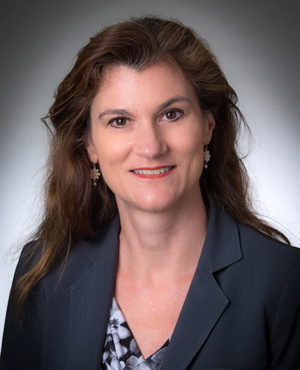About Scripps Health
Founded in 1924 Scripps Health treats more than 700,000 patients annually at its five acute-care hospital campuses, home health care services, 27 outpatient centers and clinics and hundreds of affiliated physician offices. Scripps is also at the forefront of clinical research and has three graduate medical education programs.
Lisa Thakur, CPA, MBA, FACHE, FHFMA
Corporate senior vice president, ancillary operations
Scripps Health
San Diego, California
In her current role, Lisa Thakur is responsible for ancillary services and business at Scripps Health, such as home health, laboratory, imaging and other business services. She holds a bachelor’s degree in business administration from the University of Washington, and a master’s of business administration from Arizona State University. She is a Certified Public Accountant (CPA) and a member of the American Institute of Certified Public Accountants. Prior to joining Scripps Health, she worked as a finance and business manager at Good Samaritan Medical Center in Phoenix. She also managed financial operations and human resources for Freedom Plaza Retirement Center/Care Center in Peoria, Arizona.
In 1998, Thakur joined Scripps Memorial Hospital La Jolla, where she was chief financial officer and then chief operating officer. In 2013, she was one of four site executives tapped to move Scripps toward a horizontal, matrixed organizational structure. As corporate vice president of clinical and support services, she assumed system responsibility for supply chain, endoscopy, perioperative services and pharmacy, bringing new system alignment to these functions, which resulted in cost savings of $130 million over six years. Born and raised in Seattle, Washington, she has two teenage boys, ages 15 and 18.
Journal of Healthcare Contracting: Can you describe the most challenging and/or rewarding supply-chain-related project in which you have been involved in the past 12-18 months?
Lisa Thakur: Setting up and leading a new value analysis team. Traditionally, when IDNs speak about value analysis, they are referring to consolidating implant vendors or improving the way they manage new-product requests. We wanted to revamp value analysis and place supply chain in the middle of it. And we have done so. Today, our contracting team and I meet with physicians to analyze new products or standardization opportunities. Typically, a nurse and a data analyst also attend, so we can discuss clinical evidence, utilization and potential contracting strategies.
It’s a different type of approach – one that has called for adjustment on our side and that of our physicians. Supply chain provides the physicians with a menu of options, including potential financial and clinical outcomes of their decisions, but leave the ultimate decision-making to the physicians. Our physicians have come to respect the unique expertise and skill that the supply chain team brings to the table; they trust us as well as their own decision-making capabilities.
Supply Chain has gone from having folks question what we were doing and why we were doing it, to becoming one of Scripps’ top-four strategic objectives for the past two years, with amazing results.
JHC: Please describe a project you look forward to working on in the next year.
Thakur: Scripps Health recently implemented a new leadership structure in which physicians have oversight over the medical quality and operational efficiency at each of our five hospital campuses in a new Physician Operating Executive (POE) role. Supply Chain is partnering with these new physician leaders on value analysis projects that identify areas of practice variation, utilization opportunities, and overall cost reduction strategies, but that also maintain or improve quality and the patient experience.
JHC: How have you improved the way you approach your profession in the last five to 10 years? Did you have any help doing so, or was there any particular incident that was particularly significant?
Thakur: I have focused more on working directly with physicians and trying to better understand their perspectives. I started presenting potential options to them and then asking them to decide on priorities. I strategize more on what can be done and prioritize based on increasing levels of difficulty.
JHC: In your opinion, what will be some of the challenges or opportunities facing the next generation of supply chain professionals? What should they be doing now to prepare to successfully meet those challenges and opportunities?
Thakur: Supply chain folks need to get out and work directly with physicians as true partners, and not just tell them what the priorities are. They need to focus on more than just sourcing and standardization, but also utilization. Also, having nurses work in supply chain to bridge the gaps between clinical and supply chain is an imperative.

